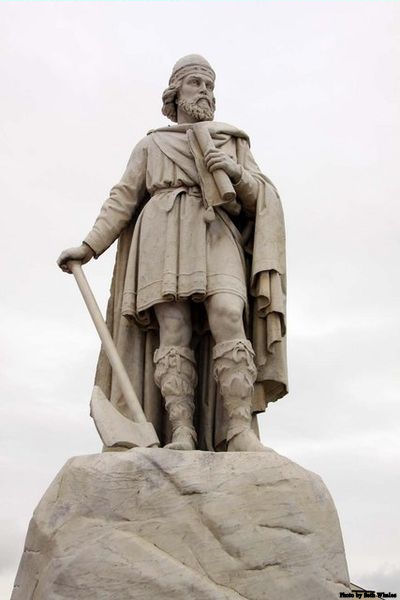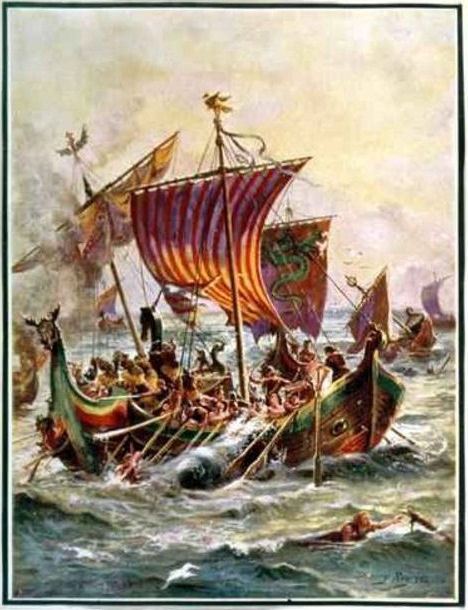In the fifth century the Saxons had been formidable for their power by sea; their conquests in Britain had directed their attention to other objects, and had annihilated their fleet. But Alfred now saw the necessity of opposing the Danes on their own element. In 875 he equipped a few ships, manned them with foreign adventurers, whom the hope of reward had allured to his service, and, trusting himself to the faith of these mercenaries, sailed in quest of an enemy. Fortune threw in his way a Danish fleet of seven ships, one of which he captured, while the others escaped. This trifling success elevated his hopes; ships and galleys were built, and by unceasing efforts, he at last succeeded in creating a navy. He had soon reason to congratulate himself on this acquisition. A resolution had been taken by the Northmen to evacuate Wareham. Their cavalry proceeded to join their friends at Exeter, and were followed by Alfred, who invested that place by land; the infantry embarked on board the fleet, and were directed to steer to the same city. But they had scarcely put to sea, before a storm compelled them to run along the coast of Hampshire, where they lost one-half of their ships. The others, shattered by the tempest, recovered their course, but were opposed by the Saxon fleet, which blockaded the mouth of the Ex, and after a sharp action were entirely destroyed. The loss of one hundred and twenty sail induced Gothrun to treat in earnest. More hostages were given, the former oaths were renewed, and the Northmen marched from Exeter into Mercia….
The first attempt which the king made to create a navy has been already mentioned. His success stimulated him to new exertions; and, to acquire knowledge, and to do honor to the naval profession, he often accompanied his squadrons in their expeditions. On one of these occasions he met four sail of Northmen. Two were captured by boarding, and their crews put to the sword; the commanders of the other two, terrified by the fate of their companions and their own loss, threw down their arms, and on their knees solicited mercy. On another occasion the Saxon fleet surprised and captured thirteen sail in the river Stour. Every man on board was massacred; but the same evening the victors in their return were intercepted by a Danish squadron, and completely defeated. As soon as the king became acquainted with the arts of attack and the modes of defense practiced by the northern nations, several improvements suggested themselves to his superior sagacity.
He ordered the ships to be built of larger dimensions than those of the Danes. Their decks were higher, and their length double. The increased elevation gave his mariners an advantage over their enemies, who were compelled to direct their strokes upwards; and the greater bulk of the vessels added to their stability in the water, while the Danish ships were agitated by the slightest motion. That their celerity might not be retarded by the additional weight, he augmented the number of the rowers, and gave to all his vessels thirty, to several more than thirty, oars on a side. This fleet was so judiciously disposed in the different harbors, that the marauding squadrons of the barbarians found it difficult to approach, or to abandon, the shore with impunity.
John Lingard, The History of England: From the First Invasion by the Romans to the Accession of William and Mary in 1688 (Edinburgh: John Grant, 1902), vol. I, 196-7, 206-7.
Short Stories on Honor, Chivalry, and the World of Nobility—no. 537












